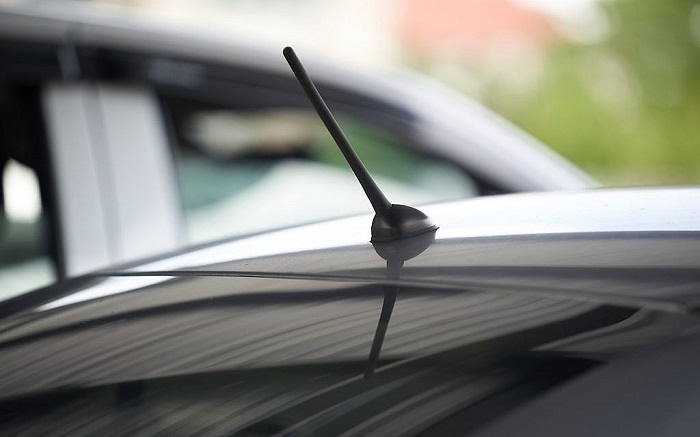There’s one on every vehicle you pass on the highway but one that’s most often overlooked: the car antenna. Antennas have transformed from stodgy, old-fashioned tall metal sticks reaching for the sky stick-out-a-miles above fenders to shark-fin varieties dozing quietly on hoods. They may not be as glitzy as a roaring engine or flicker of electronic display, but without them, drivers would be radio- and GPS-less, to name just a couple.
A car antenna is not just an antenna for receiving the radio. It is the culmination of decades of automotive technology evolution, evolving along with the automobiles themselves. From AM/FM radio to Bluetooth, GPS, and satellite radio, the antenna keeps cars in tune with the outside world.
In this detailed guide, we’ll explore the car antenna in depth—its history, how it works, types, design trends, common issues, maintenance tips, modern upgrades, and its role in the future of connected and autonomous cars.
The Basics of Car Antennas
What Is a Car Antenna?
Auto antenna is a pick-up antenna for electromagnetic waves (radio waves) and distributes them to the auto receiver. It is an open wireless signal receiver and tower and transmitter of them.
Primary Functions
- Radio Reception – AM/FM radio waves
- Navigation – GPS connectivity
- Satellite Radio – Satellite signals for XM or Sirius radio
- Telecommunication – Phone integration antennas
- Remote Entry – Keys with key fob and remote locking
Whereas all consider antennas radio apparatus only, antennas of the modern car are in the form of doing more than one thing.
History of Car Antennas
Early Years (1920s–1930s)
Radios were fitted only in motorcars from the 1920s. Early-years antennas were rods long protruding outward outward exterior on fender.
1950s–1970s
High metal whip antennas were common. These break-easy antennas were radio culture.
1980s–1990s
Power antennas (up and down automatically) were common. Antennas moved to fenders and roofs for better reception.
2000s–Present
Streamlined looks and shark-fin antennas were the norm. Add-ons of satellite service, GPS, and Bluetooth.
The evolution is symbolic of the way in which automobiles continued to be integrated into everything every decade.
How Car Antennas Work
Car antennas work by receiving radio waves, electromagnetic waves broadcast by stations or satellites.
- Transmission – Stations or satellites send the signals
- Reception – The antenna gathers the waves
- Conversion – Electric currents are obtained through signal conversion
The car receiver converts the signals into sound or information. Antennas must be tuned to a signal’s frequency that they must receive. AM and FM antennas, for example, are different in the manner they are used with other sets of frequencies.
Car Antenna Types
- Whip Antenna – Flexible material long, curved metal strip. Usually mounted on trucks and older vehicles. Cheap and efficient with FM radio reception.
- Power Antenna – Folds up when not in use, installs with usage with radio. Common on 80’s and 90’s models. Cute but mechanically flawed.
- Shark Fin Antenna – Airflow design, small size appears like shark fin. May accommodate over one antenna (radio, GPS, Bluetooth, etc.). Now a standard issue on most new cars.
- Hidden Antenna – Hidden in rear window or windshield. Creates streamlined look with no rod to be noticed.
- Satellite Antenna – Mapped to catch satellite radio signals. Typically found in combination with other antennas.
- Internal Antenna – Installed inside car (most commonly in dashboards). For home-made (DIY) installations.
All are compromise of looks, reception quality, and useability.
Car Antenna Location
Where placed influences how well it picks up signals and shields against the elements.
- Fender-Mounted – Stock appearance, open but still exposed
- Roof-Mounted – Improved signal as it’s higher
Later designs have shark fins mounted on top for aesthetics and function.
Typical Issues With Antennas On Vehicles
Physical Damage
- Creased or snapped whip antennas
- Sagging power antennas with trash or cheap motors
Poor Reception
- Due to interference from mountains or skyscrapers
- Faulty or rusty connectors
Electrical Issues
- Wire destroyed from receiver to antenna
- Defective automatic motor antennas
Weather
- Rust due to rain and snow
- Static interference by storms
These flaws always degrade signal quality and will have to be fixed immediately.
Car Antenna Repair and Maintenance
Maintenance Tips
- Wash gently to avoid warping or bending the antenna
- Use rust protectants on bare metal
- Pull-in power antennae before washing the vehicle
Repair Options
- Whip Replacement – Cheap and easy to screw in
- Power Antenna Repairs – Mast or motor replacement
- Cleaning Connectors – Contact cleaner to improve reception
- Professional Repair – For shark fin or glass-mounted antennae
Maintenance will give an antenna decades of life.
Car Antenna Uplifts
Drivers upgrade antennas for performance or appearance.
- Short Stubby Antennas – Whips are brief but probably less range
- Aftermarket Power Antennas – Give retro luxury appearance
- Enhanced Shark Fins – Two or more functions in one appliance
- High-Performance Antennas – Enhance rural receive quality of hearing
These upgrades attain form and function.
Antennas and Car Technology Integration
Infotainment
Phone connectivity through Bluetooth. Data systems on antennae enable Spotify-like streaming programs.
Navigation
GPS satellites talk to antennae to enable accurate location capability.
Safety Features
Antennae enable vehicle tracking, SOS, and remote unlock.
Autonomous Vehicles
Future autonomous vehicles will need intelligent antennae to enable real-time connectivity (5G and V2X communications).
Car antennas have become the norm for luxury driving systems.
Car Design Trends and Car Antennas
Design has primarily been based on the history of how antennas evolved.
- Timeless Snapshot – Whip antennas were hip in the 60s and 70s
- Sheikh Chic – Power antennas were hip in the 80s
- Low-key Chic – Shark fins can now be ordered with the car designs
- Blind Spot – Antennas will soon be mounted on glass
Today, design must live alongside appearance, aerodynamics, and performance.
Automobile Antennas in Popular Culture
Auto antennas have long endured celluloid and soundtracks.
- Whip antennas defined old American cruisers
- 90s hip-hop culture bobbed to indifferent-go-lucky power antennas popping-popping up and down
- In TV film, antennas are sometimes used to symbolize outdated taste and nostalgia
Regardless of how small they are, antennas are culturally significant.
Car Antennas Compared
| Type | Quality of Reception | Style | Durability | Price |
| Whip Antenna | High | Old-fashioned | Moderate | Low |
| Power Antenna | High | Cool/retro | Low | Medium |
| Shark Fin Antenna | Good | Modern/aerodynamic | High | Medium |
| Hidden Antenna | Moderate | Streamlined | Medium | Medium |
| Satellite Antenna | High (for XM/Sirius) | Integrated | High | Higher |
Each is suited best for other drivers depending on needs.
The Future of Car Antennas
As cars get more integrated, antennas will have more work to do.
- 5G Integration – Quick data for autonomous
- Multi-Function Antennas – GPS, Wi-Fi, Bluetooth, etc.
- Invisible Designs – Internal antennas will exceed external
- Smart Antennas – Access to auto-switching frequencies
Antennas will be as common as motors in offering mobility.
Car Antennas: Most Asked Questions
Do new cars all have outside antennas?
No. Shark-fin or hidden antennas are employed in new vehicles.
Can I put up my car antenna?
Yes, whip antennas are simple to install. Fantasy appearance presented may demand an expert.
Why is the car radio full of static?
Some of the reasons are: weak antenna, loose mounting, or interference.
What is the best antenna for use in rural areas?
High-end after-market style or high-antenna whips give the best reception.
Do car radios only use car antennas?
No. Antennas are already servicing GPS, Bluetooth, Wi-Fi, and telecommunications use.
The car antenna is a lowly device but a lifesaver that reminds drivers they are linked to communication, entertainment, and navigation. Antennas have changed with technology shifts and design over the decades, from whip antennae during the 1960s to the modern shark fins.
As vehicles become more electric and autonomous, antennas will be more critical—facilitating GPS, 5G, and other high-end safety systems. Meanwhile, whether bringing an old car back to life or driving a new EV, the antenna tags along.



